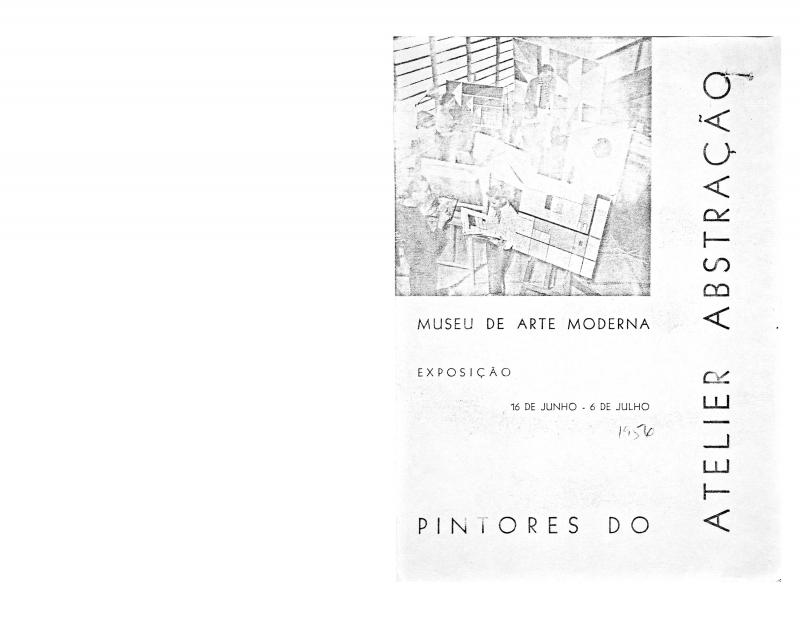Samson Flexor (1907–1971) started studying painting and music in Romania when he was eleven years old; he moved to Brussels and then to Paris in 1922 to continue his studies. Inspired by the Geometric Abstraction he saw in São Paolo he moved his family to Brazil in 1948 and settled there. He developed a close friendship with the Belgian curator Léon Degand, who was the director of the MAM-SP (Museu de Arte Moderna de São Paulo) at the time, and his work was shown at the new museum’s inaugural exhibition Do Figurativismo ao Abstracionismo. Two years later he opened the Atelier Abstração—a studio in his own home (in the Vila Mariana neighborhood) where the principles of abstract art were taught, and recitals and conferences were organized—which became a gathering place for artists and intellectuals. The test for enrollment in the Atelier became famous: aspiring students were required to draw a guitar with a ruler and set square. The Atelier Abstração’s original students were Izar do Amaral Berlinck, Zilda Andrews, Emílio Mallet, Leopoldo Raimo, Jacques Douchez, Maria Antonia Berlinck, Leyla Perrone-Moisés, Norberto Nicola, Wega [Nery], Anésia Pacheco Chaves, and Alberto Teixeira (see the ICAA Digital Archive doc. no. 1316985). The group exhibition mentioned in this article, which took place in July 1954 at the MAM-SP, was the second one organized by Flexor and the Atelier Abstração.
[For more information about the Atelier Abstração, see “Atelier Abstração” (doc. no. 1232253) and “Pintores do Atelier Abstração: exposição 16 de junho - 6 de julho” (doc. no. 1085247).]
Professor Walter Zanini (1925–2013), the art critic, historian, and curator, was the first director of the MAC-USP (Museu de Arte Contemporânea da Universidade de São Paulo). During his tenure there (from 1963 to 1978), he encouraged emerging artists by supporting fringe forms of artistic expression, from technological and conceptual approaches to multimedia projects based on visual languages. Zanini was one of the curators at the first Bienal de São Paulo (1951) and a teacher at the ECA-USP (Escola de Comunicações e Artes da Universidade de São Paulo). He wrote this article, which was published in the Sunday Supplement of O Tempo, a São Paulo newspaper, in 1954, while he was still a student at the Université de Paris. Zanini’s comments in the document and the reproduction of the Atelier Abstração’s manifesto are interspersed with images of paintings by Flexor and Douchez and a photo of the young artists at work in Flexor’s studio.
[For more information about Professor Zanini’s writings, see “[Letter] 1969” (doc. no. 1111055); “As novas possibilidades” (doc. no. 1110585); “Introdução” (doc. no. 1110588); “A colônia japonesa e as artes” (doc. no. 1111409); “Introduction” (doc. no. 1111291); and “Entrevista – depoimento” (doc. no. 1111244), among others.]







